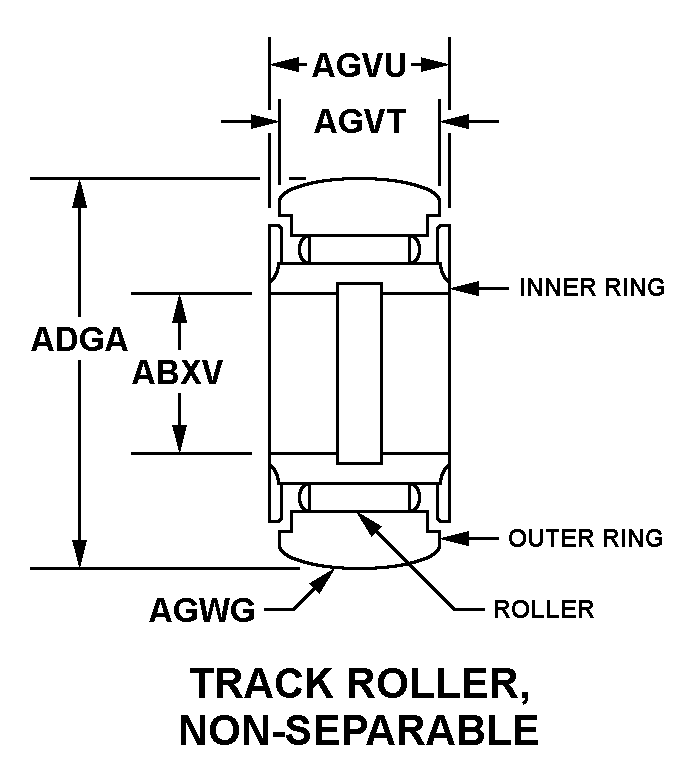3110012342662
Price Quote Get an up to date pricing and availability quote for this product. Order online or over the phone.
Quality Commitment
Serving our customers with quality and safety first.
- AS9120 Certified
- Audited supply chain
- ITAR Registered
- DDTC Registered
- HAZMAT Certified
- Customer service objectives
- Every product 100% inspected

3110-01-234-2662 Specification Set by the OEM (see RNCC code 3)
1.4993in. and 1.5000in.
2.9990in. and 3.0010in.
grease
1.4250in. and 1.4400in.
1.4900in. and 1.5000in.
60.0000in.
ground
2
contact
SELF-Aligning
external
lubrication groove and lubrication hole
no surface finish on bore
MIL-G-81322 mil spec single material response
steel roller
L-P-392 fed spec 1st material response seal or L-P-410, type 6/6 fed spec 2nd material response seal
nickel outer ring and chromium outer ring
QQ-P-416, type 1, class 2 fed spec 1st treatment response inner ring or MIL-C-13924 mil spec 2nd treatment response inner ring
track roller, NON-Separable
Cross Reference Parts Part numbers that meet the specification outlined on this page and set by the OEM
Identification Item Identification Guide (IIG) and Item Name Code (INC)

Definition Definition of approved item name (AIN): "BEARING,ROLLER,NEEDLE"
A single or multiple-row antifriction bearing used with or without inner or outer races characterized by relatively small size rollers usually not ranging above 0.250 inch (6.35mm) diameter and generally longer in length in relation to diameter.
3110-01-234-2662 Material Hazmat, Precious Metals, Criticality, Enviroment, and ESD
Indicates there is no data in the hmirs and the nsn is in a fsc not generally suspected of containing hazardous materials.
Item does not contain precious metal.
The item does not have a nuclear hardened feature or any other critical feature such as tolerance, fit restriction or application.
Identification Codes
HMIC: Hazardous Material Indicator Code. A one position code that identifies a hazardous item.
PMIC: Precious Metal Indicator Code. A one position code which identifies items that have precious metals as part of their content. precious metals are those metals generally considered to be uncommon, highly valuable, and relatively superior in certain properties such as resistance to corrosion and electrical conductivity.
ESD: Electrostatic Discharge. Indicates if an item is susceptible to electrostatic discharge or electromagnetic interference damage. electrostatic discharge damage occurs when an accumulation of static electricity generated by the relative motion or separation of materials is released to another item by direct contact. electromagnetic interference damage occurs when an item comes into proximity with an electrostatic or magnetic field.
ENAC: Enviromental Attribute Code. Identifies items with environmentally preferred characteristics.
CRITL: Criticality Indicator Code. Indicates an item is technically critical by tolerance, fit, application, nuclear hardness properties, or other characteristics.






